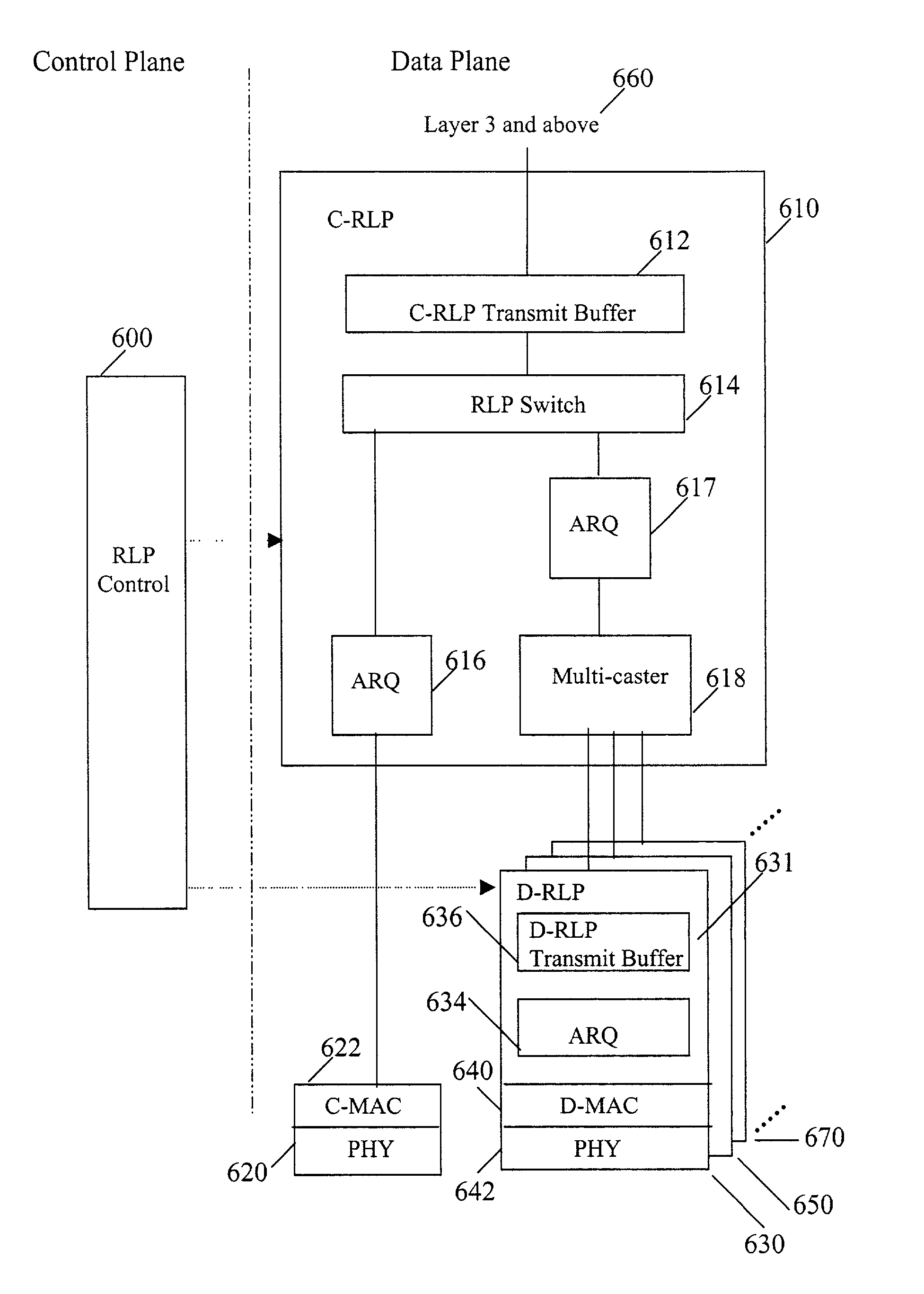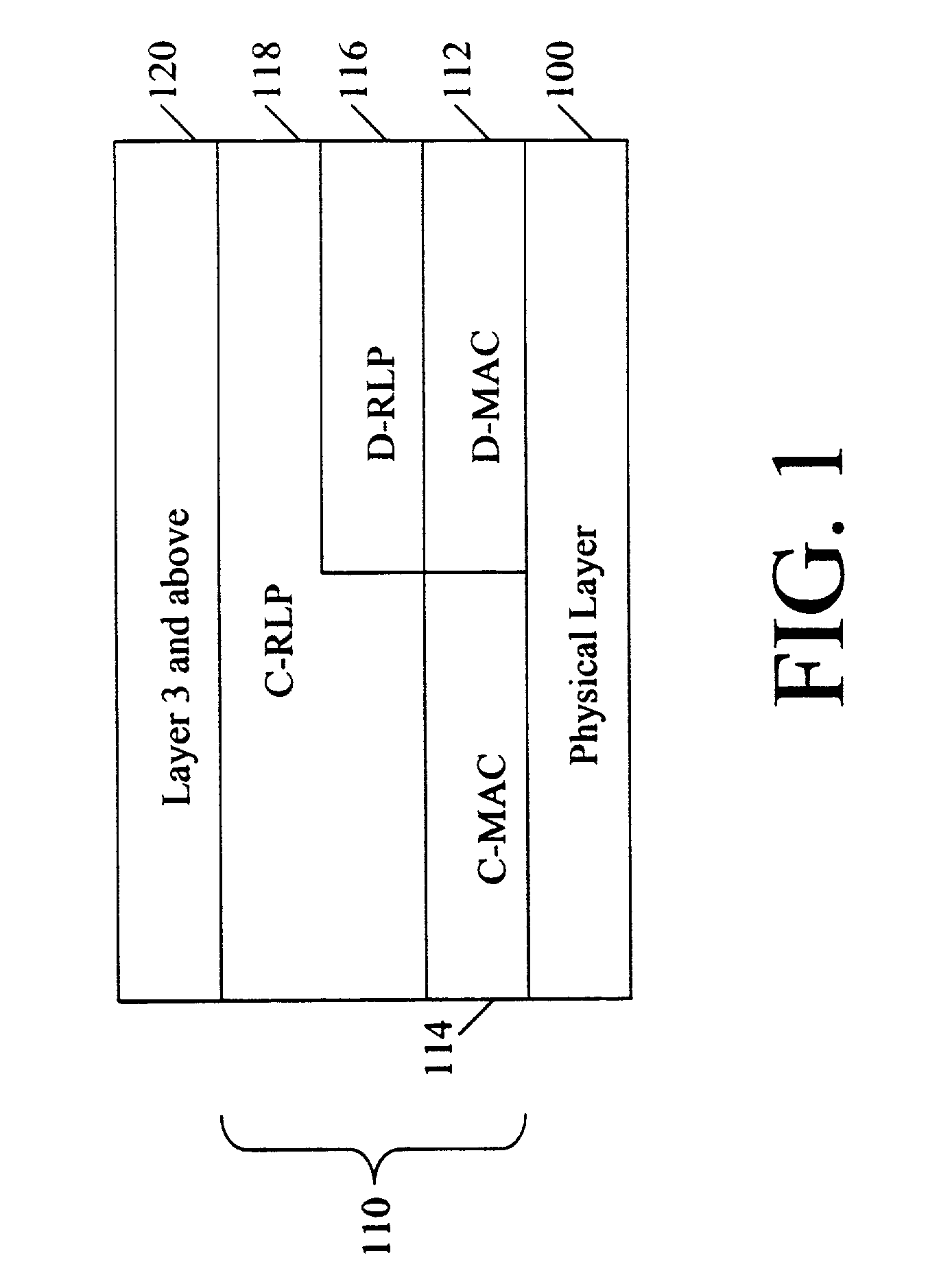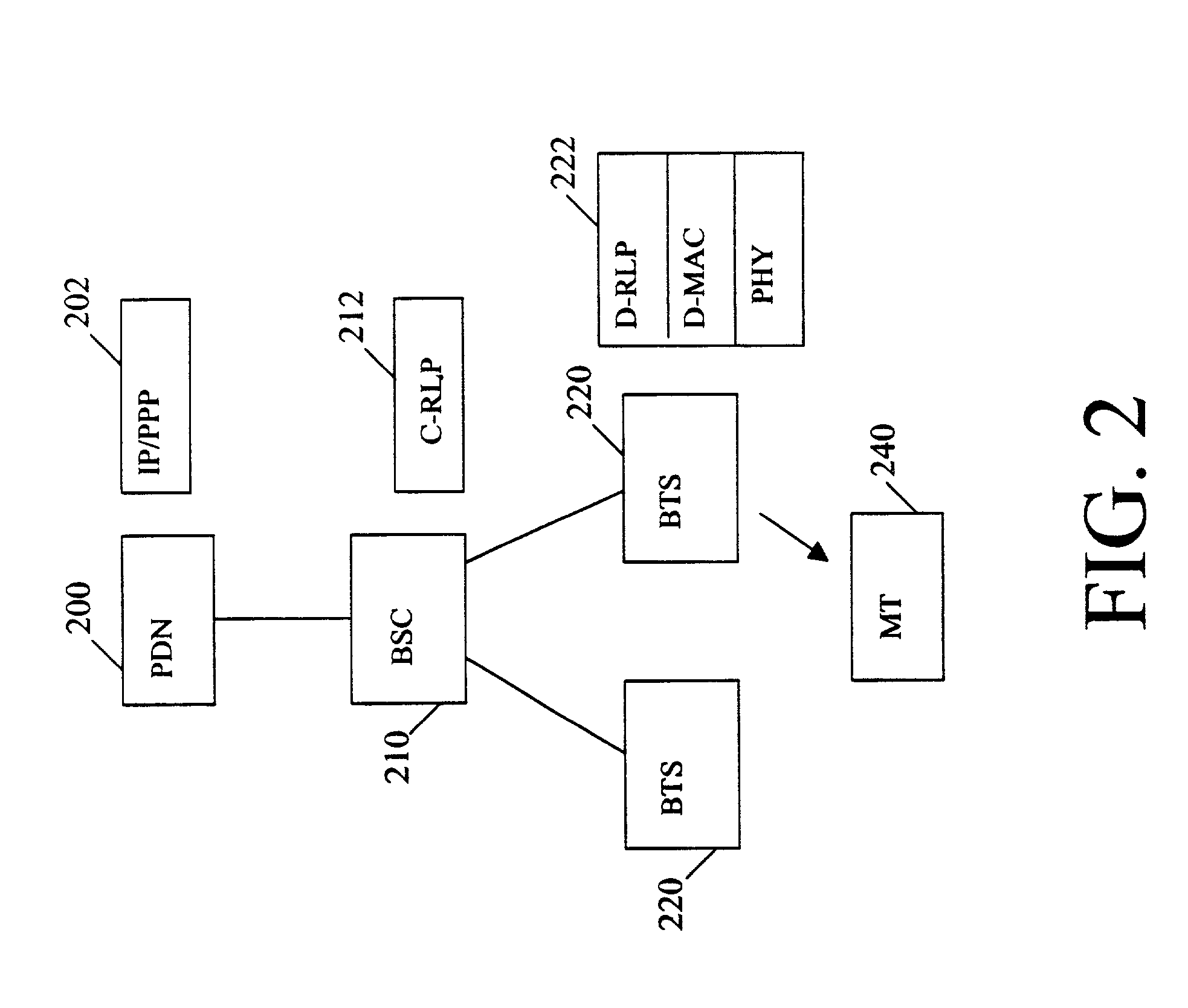Dynamic, dual-mode wireless network architecture with a split layer 2 protocol
- Summary
- Abstract
- Description
- Claims
- Application Information
AI Technical Summary
Benefits of technology
Problems solved by technology
Method used
Image
Examples
Embodiment Construction
[0020]The present invention provides a wireless data network architecture that supports both centralized mode operation and distributed mode operation. In the centralized mode, all of the Open Systems Interconnection (OSI) reference model data link layer, also known as layer 2, protocol functions are implemented within the radio access control entity, such as at a base station controller (BSC) or similar network controller. In the distributed mode, some of the layer 2 protocol functions are implemented at the BSC or similar network controller, and some of the layer 2 protocol functions are implemented at the BTSs.
[0021]The data transmission to a mobile terminal may be dynamically switched from one of the modes to the other as a function of various implementation-specific triggers such as the data transmission rate, the mobility of the customer device and the type of user application. As an example, the distributed mode may be implemented when a data call is made to or received from ...
PUM
 Login to View More
Login to View More Abstract
Description
Claims
Application Information
 Login to View More
Login to View More - R&D
- Intellectual Property
- Life Sciences
- Materials
- Tech Scout
- Unparalleled Data Quality
- Higher Quality Content
- 60% Fewer Hallucinations
Browse by: Latest US Patents, China's latest patents, Technical Efficacy Thesaurus, Application Domain, Technology Topic, Popular Technical Reports.
© 2025 PatSnap. All rights reserved.Legal|Privacy policy|Modern Slavery Act Transparency Statement|Sitemap|About US| Contact US: help@patsnap.com



